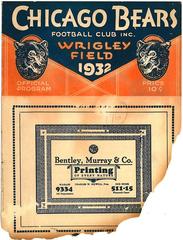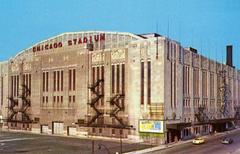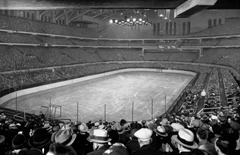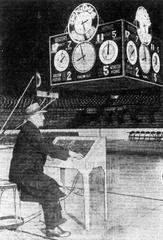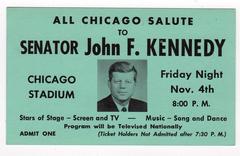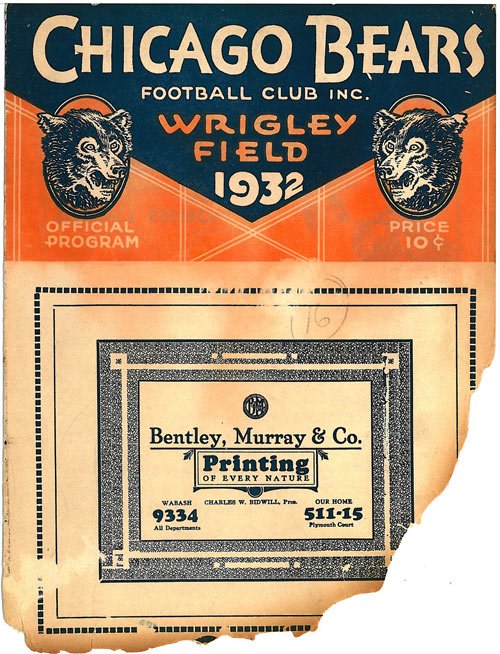
Chicago Stadium Visiting Hours, Tickets, and Historical Significance Guide
Date: 14/06/2025
Introduction to Chicago Stadium: History and Cultural Importance
Chicago Stadium, affectionately known as the “Madhouse on Madison,” stands as a monumental chapter in the city’s rich sports and cultural heritage. Opened in 1929, it was once the world’s largest indoor arena, celebrated for its innovative design that provided unobstructed views and an electrifying atmosphere. As the long-time home of the NHL’s Chicago Blackhawks and the NBA’s Chicago Bulls, the Stadium hosted legendary events, from Blackhawks’ Stanley Cup triumphs to the Bulls’ early 1990s championship runs featuring Michael Jordan. Beyond sports, it played host to national political conventions, concerts by iconic performers, and significant community gatherings, establishing itself as a true cultural landmark.
Though the original building was demolished in 1995, its legacy endures through the United Center, which stands adjacent to the original site and carries forward the traditions of Chicago Stadium. Visitors today can connect with this legacy through commemorative statues, plaques, and the renowned Michael Jordan statue. This guide explores the history, architectural significance, and enduring cultural impact of Chicago Stadium, while providing practical information for those wishing to experience its legacy at the United Center and across Chicago’s historic West Side (Encyclopedia of Chicago; Chicago Detours; United Center Official Website).
Table of Contents
- Introduction
- Historical Overview of Chicago Stadium
- Major Events and Tenants
- Cultural Impact
- Decline, Demolition, and Legacy
- Visiting the United Center: A Tribute to Chicago Stadium
- Frequently Asked Questions (FAQ)
- Conclusion
- References
Historical Overview of Chicago Stadium
Origins and Construction
Chicago Stadium was conceived during the late 1920s to fulfill the city’s demand for a large multipurpose indoor arena. Sports promoter Paddy Harmon led the initiative, envisioning a venue that would be Chicago’s epicenter for sports, entertainment, and civic events. Construction began in 1928 at 1800 W. Madison Street, and the stadium opened on March 28, 1929, boasting a seating capacity of up to 20,000 for sports and even more for concerts and conventions (Encyclopedia of Chicago).
Architectural Significance
The stadium’s architecture was groundbreaking for its time. Massive steel trusses spanned 266 feet, eliminating interior columns and ensuring unobstructed views from every seat (Chicago Detours). The triple-tiered bowl, with steeply raked upper decks, amplified crowd intensity and acoustics, making the stadium one of the loudest venues in sports history. Chicago Stadium was also the first arena to feature air conditioning and a four-sided analog scoreboard.
Major Events and Tenants
Sports History
Chicago Stadium was home to the NHL’s Chicago Blackhawks (1929–1994) and the NBA’s Chicago Bulls (1966–1994). Iconic moments include:
- The Blackhawks’ three Stanley Cup championships (1934, 1938, 1961).
- The Bulls’ first three NBA titles (1991–1993), highlighted by Michael Jordan’s legendary performances.
- The first-ever NFL indoor playoff game in 1932, where the Chicago Bears triumphed over the Portsmouth Spartans (Encyclopedia of Chicago).
Political, Cultural, and Entertainment Events
Beyond sports, Chicago Stadium was a stage for major national events. It hosted the Democratic National Conventions in 1932 and 1940, religious revivals, labor rallies, and concerts by artists such as Frank Sinatra and Elvis Presley. The stadium’s Barton pipe organ provided a unique soundscape, becoming a beloved feature of many events (Encyclopedia of Chicago).
Cultural Impact
Dubbed the “Madhouse on Madison,” Chicago Stadium was famous for its deafening crowds and passionate fan base (Chicago Detours). Its design and atmosphere fostered a sense of unity among Chicagoans, making it a community hub that transcended sports.
Decline, Demolition, and Legacy
By the early 1990s, Chicago Stadium’s amenities lagged behind modern standards. In 1994, the Bulls and Blackhawks moved to the newly built United Center next door, which offered updated facilities and improved accessibility (Chicago Detours). Chicago Stadium was demolished in 1995, but its memory is preserved through artifacts such as the Barton pipe organ and commemorative installations at the United Center.
Visiting the United Center: A Tribute to Chicago Stadium
United Center Visiting Hours and Tickets
The United Center is open to the public during events and for scheduled tours. Visiting hours vary by event, so it is best to check the United Center Official Website for current schedules and tour availability.
Tickets for Bulls and Blackhawks games, as well as other events, can be purchased online, at the box office, or through authorized resellers. Guided tours are available on select dates and include behind-the-scenes access to locker rooms, historical exhibits, and memorabilia honoring Chicago Stadium.
Tours and Unique Experiences
- Guided Tours: Explore the United Center’s history and architecture, learn about Chicago Stadium’s legacy, and visit statues of sports legends, including Michael Jordan.
- Photo Opportunities: Don’t miss the Michael Jordan statue (now inside the east atrium), Blackhawks statues, and the Chicago Stadium commemorative plaque.
Accessibility and Travel Tips
The United Center is accessible by public transit (CTA buses and trains) and offers ample parking, though lots fill quickly during events. The facility is ADA compliant, with wheelchair-accessible seating and services available.
Nearby Attractions
Complement your visit by exploring nearby landmarks such as Millennium Park, the Chicago History Museum, the Chicago Riverwalk, and the city’s vibrant West Loop dining scene.
Frequently Asked Questions (FAQ)
Q: Can I visit the original Chicago Stadium?
A: The stadium was demolished in 1995. However, the United Center stands on the adjacent site and features commemorative statues and plaques honoring Chicago Stadium’s legacy.
Q: What are the United Center’s visiting hours?
A: Visiting hours depend on the event schedule. Check the official website for details.
Q: Where can I buy tickets for Bulls or Blackhawks games?
A: Tickets are available through the United Center’s box office, official website, and authorized ticket sellers.
Q: Are United Center tours available?
A: Yes, guided tours are offered on select dates, providing insights into the arena’s history and legacy.
Q: Is the United Center accessible for people with disabilities?
A: Yes, the venue is fully ADA compliant, with dedicated seating and services.
The Legacy and Location of Chicago Stadium
Chicago Stadium’s original address was 1800 West Madison Street. Today, the United Center occupies this historic site, serving as the home of the Bulls and Blackhawks and preserving the “Madhouse on Madison” tradition (Wikipedia – United Center).
Commemorative Features and Statues
- Chicago Stadium Commemorative Plaque and Blackhawks Statue: Located on the north side of the United Center, honoring Blackhawks legends and featuring a commemorative marble plaque (Wikipedia – United Center).
- Michael Jordan Statue: “The Spirit” is housed inside the United Center’s east atrium and accessible during public hours.
- Bobby Hull and Stan Mikita Statues: Bronze tributes to Blackhawks greats, located outside the arena.
United Center Overview
Opened in 1994, the United Center is the largest arena in the U.S. by size and hosts over 200 events annually, including all Bulls and Blackhawks home games, concerts, and special events (Encyclopedia of Chicago; Wikipedia – United Center). The venue includes extensive accessibility features, modern amenities, and a variety of food and merchandise options.
Visiting Essentials
- Location: 1901 West Madison Street.
- Access: Public transportation and parking available; arrive early on event days.
- Statue Viewing: Outdoor statues are accessible 24/7; the Michael Jordan statue is inside and available during atrium hours.
- Tours: Offered on select dates; check the official website for availability.
- Accessibility: Fully ADA compliant.
Exploring the Neighborhood
The Near West Side, once dominated by industry and public housing, now features vibrant dining and entertainment options, especially in the West Loop. Before or after your visit, explore local restaurants or visit other Chicago sports landmarks, such as Wrigley Field and Soldier Field (360 Chicago; Chicago Architecture Center).
Summary: Key Points and Visitor Recommendations
Chicago Stadium’s enduring legacy as the “Madhouse on Madison” remains central to Chicago’s identity. While the original arena no longer stands, its spirit thrives through the United Center and commemorative landmarks. Visitors can engage with this history through guided tours, statues, and the vibrant game day atmosphere, while also exploring the evolving neighborhood and other historic venues.
Understanding the history, ticketing options, and amenities enhances any visit, and nearby attractions provide additional cultural enrichment. Embrace both the past and present by experiencing the legacy of one of America’s greatest sports cities (Encyclopedia of Chicago; Chicago Detours; United Center Official Website).
Stay updated on events and visitor tips by downloading the Audiala app and following dedicated social media channels.
References
- Encyclopedia of Chicago
- Chicago Detours
- United Center Official Website
- Wikipedia – United Center
- 360 Chicago
- Chicago Architecture Center
Download the Audiala app for real-time updates on Chicago events, ticket deals, and exclusive tours! Follow us on social media for the latest Chicago sports and culture news.
